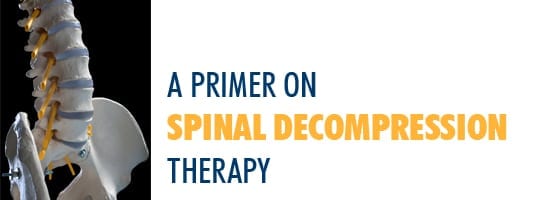
Spinal decompression therapy is designed to relieve back pain in a non-surgical manner. It can help with spinal disc injuries, herniated discs, pinched nerves, sciatica pain, degenerative disc disease, and more. Compressed discs can become brittle, and press on the nerves to cause pain. While the discs are compressed, they lack the blood flow and nutrients that they need to heal themselves. The method of decompressing the discs in the spine can help heal the spine and relieve pain over time.
How does it work?
Spinal decompression therapy uses a special decompression table. You will be secured to the table with padded straps in a comfortable position. While the table moves, its force is controlled by a computer and the movements are broken up by frequent relaxation periods. The movement of the table creates a logarithmic curve that causes a gentle pull. This elongates the spine and allows a vacuum effect to develop in the vertebrae, which helps pull the discs back into shape.
This method of therapy is designed to work in small amounts, with results adding up over time. Most patients report reduced pain after just a few sessions. The sessions last about 30 to 45 minutes, and you will have sessions as often as your doctor suggests – which could be a few times a week.
How do I know if it will work for me?
The best way to know if spinal decompression therapy will work for you is to talk with your pain management doctor. In general, the therapy is a solid option if you want a drug-free alternative to your pain and don’t want to deal with the risks associated with surgery and injections. Or, if you have already tried other methods but have not responded well to them, spinal decompression therapy can be tried as another option. It can even help if you are experiencing the same or new pain after a back surgery.
Who is not a candidate for spinal decompression therapy?
Spinal decompression therapy might not be a good choice for you if you are pregnant or if you have a severe case of osteoporosis. You also might not be a candidate if you have pelvic or abdominal cancer, an infection of the spine, or rods or other materials placed in your back. Your pain management doctor will go over your medical history with you to help you determine if the therapy is best for you.


